Group Research Focuses
Ion Pumps, Water Pumps, and Desalination Devices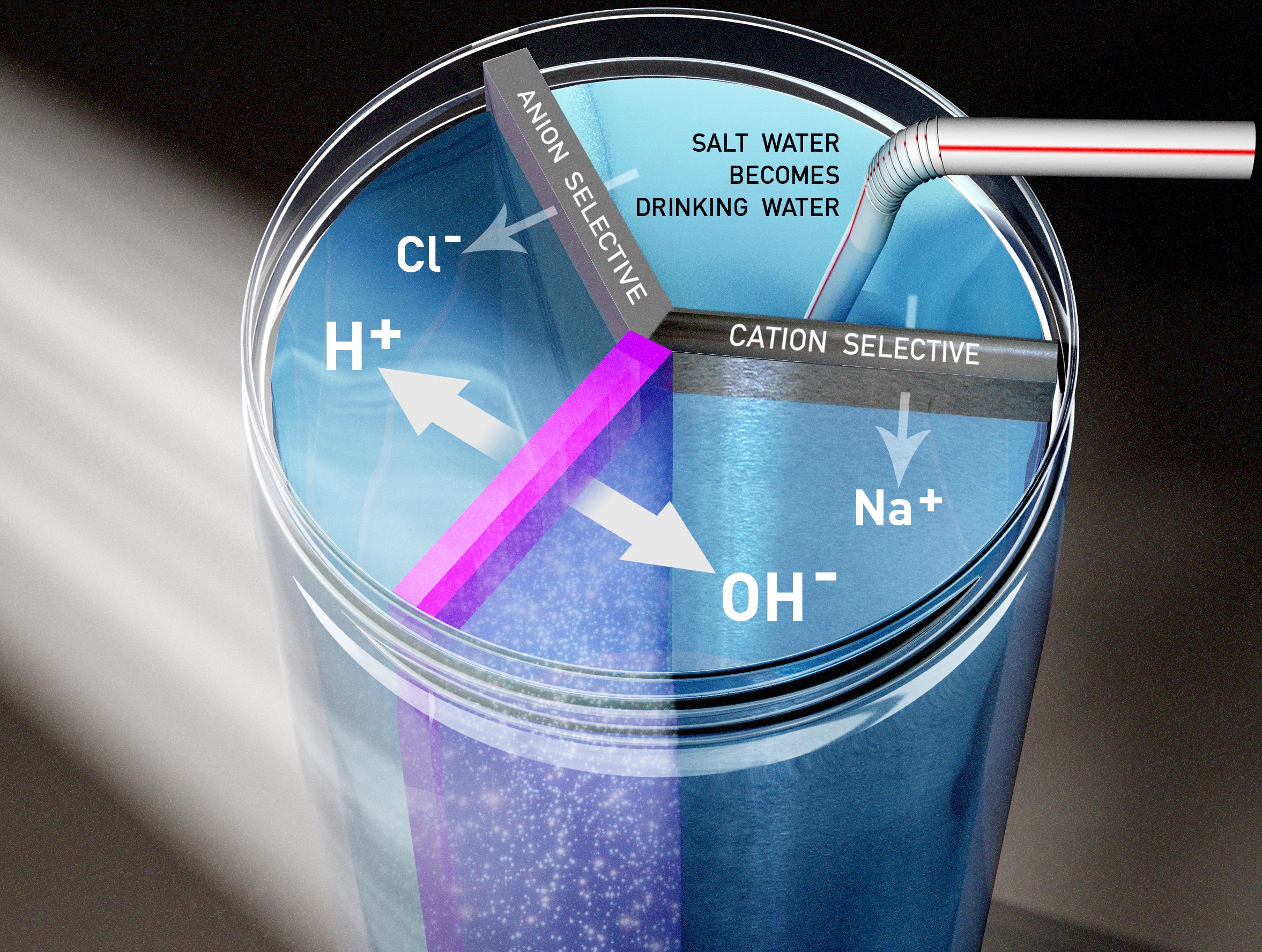 |
Ion-exchange membranes are critical to electrolyzers, fuel cells, artificial photosynthetic systems, and electrodialysis devices, by providing a barrier to fuel crossover and maintaining pressure differentials while still affording rapid ion conduction. If the membranes could also generate ionic voltages upon sunlight absorption or function as electrochemical ion-pumping ratchets, they would boost the power output and efficiency of these devices, as well as enable game-changing solar desalination innovations. The Ardo Group is characterizing excited-state ion-transfer photochemistry and photophysics and functionalizing ion-exchange materials with photoacid dyes for this purpose. The Ardo Group is also embarking on research related to other new concepts in small-scale clean water generation, including electricity-driven ratchet-based ion pumping, solar thermal distillation, and atmospheric water harvesting. |
This work is supported by funding from the U.S. Department of Energy and a Private Investor, and was previously supported by funding from the Gordon and Betty Moore Foundation, the Research Corporation for Science Advancement, Nissan Chemical Corporation, the Beall Family Foundation, a U.S. National Science Foundation graduate-student research fellowship, and a U.S. Department of Energy graduate-student research award.    | |
Catalyzing and Sensing Proton-Transfer Reactions (including LiSA DOE Hub and CI2 NSF CCI)
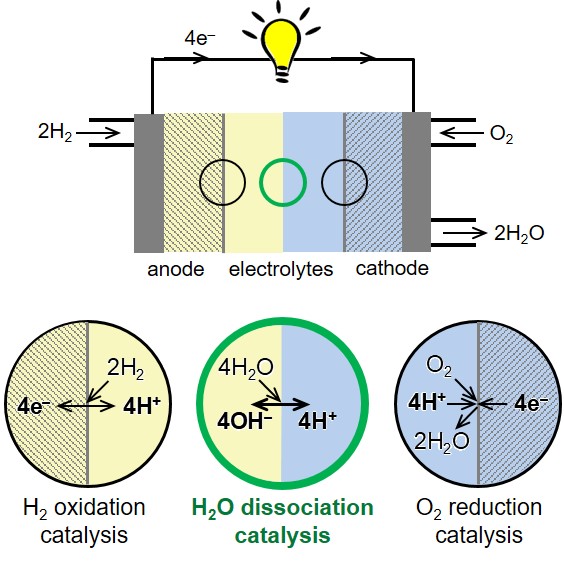 |
Controlling rates of water dissociation and formation are critical to the effective function of several environmentally important processes, including proton transfer in electrochemical reactions, CO2 capture from air, and CO2 release from oceanwater. For example, fuel cells and solar fuels devices each require electrocatalysts and ion-exchange membranes that are stable in a single electrolyte. State-of-the-art ion-exchange membranes are highly acidic, yet most scalable and inexpensive electrocatalysts are either unstable in acidic conditions or incompatible with desired redox chemistries. The Ardo Group is leveraging materials synthesis and engineering of ion-exchange membranes and synthesis of molecular proton-transfer catalysts to speed the rates of critical proton-transfer reactions. |
This work is supported by funding from the U.S. Department of Energy, the U.S. National Science Foundation, and a U.S. National Science Foundation graduate-student research fellowship, and was previously supported by funding from the Beall Family Foundation, the U.S. Department of Defense, the U.S. Department of Energy, and a U.S. Department of Energy graduate-student research award.    | |
Photocatalytic Reactors for Solar Water Splitting (including EPN DOE EFRC)
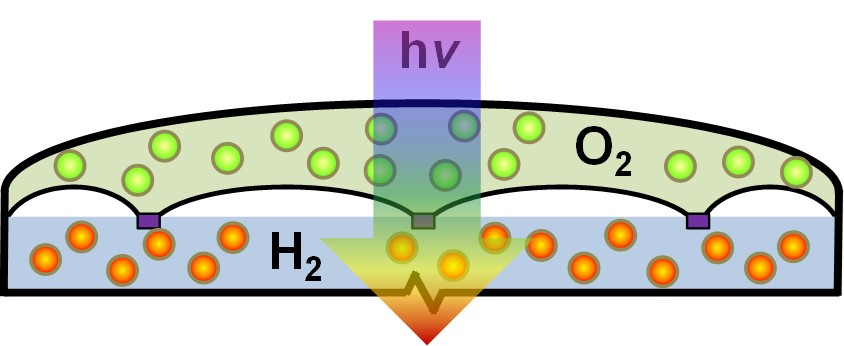 |
Scalable technologies for solar-energy conversion and storage must be efficient, robust, and inexpensive to manufacture. Recent techno-economic analyses of solar water splitting reactors suggest that colloidal-particle-based photocatalyst suspensions would be cost competitive with current forms of H2 generation. Moreover, it is projected that the first major large-scale photovoltaic installations will utilize silicon, or an inexpensive easy-to-deposit material. The Ardo Group is exploring alternative fuel-forming chemistries, materials, and designs for disruptive innovations in grid-scale solar-energy conversion, storage, and use. |
This work is supported by funding from the U.S. Department of Energy, and was previously supported by funding from the U.S. Department of Energy, the Alfred P. Sloan Foundation, and the UC Irvine Research Seed Funding Program.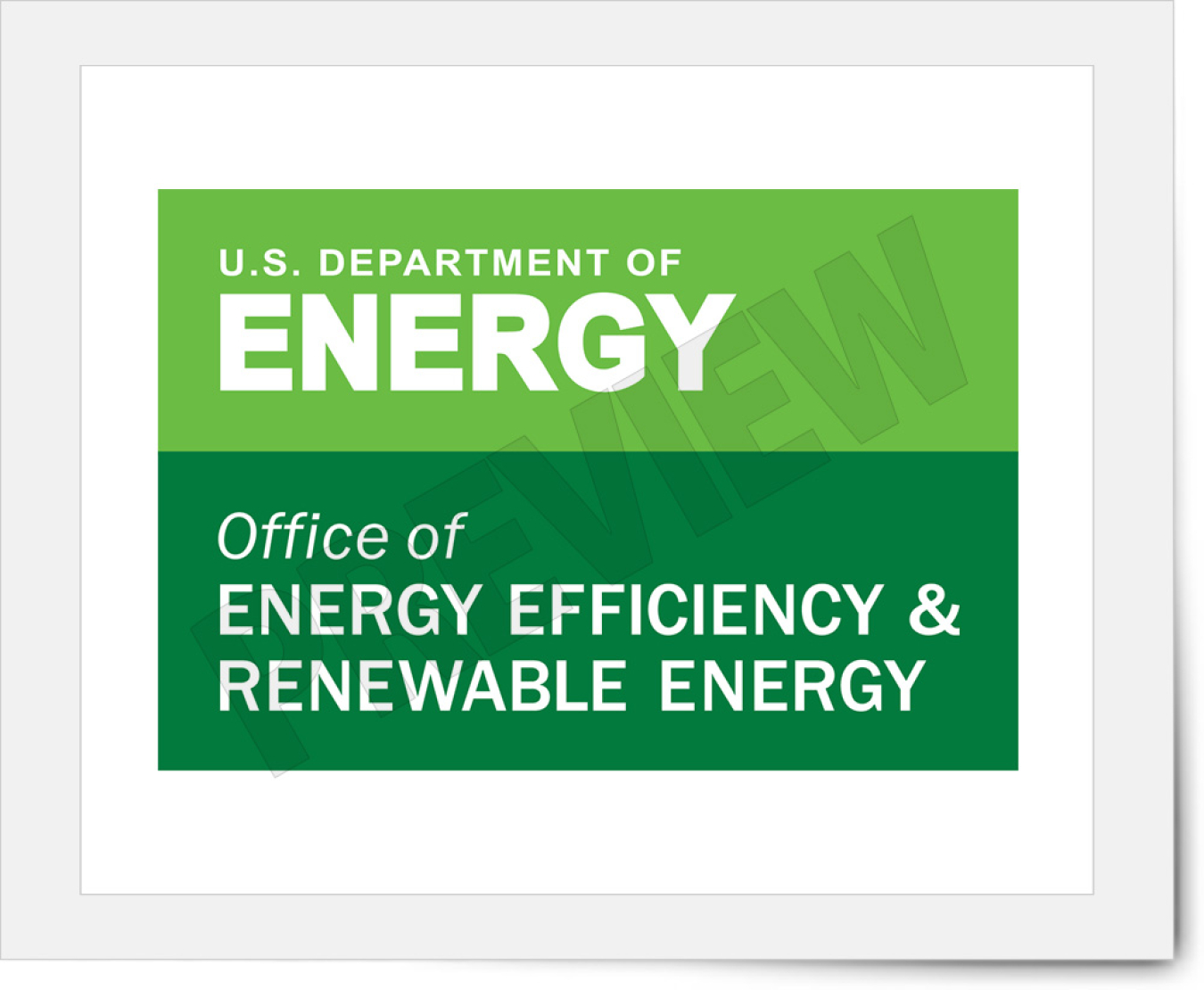    | |
Sunlight-Driven Charge Accumulation (Project No Longer Active)
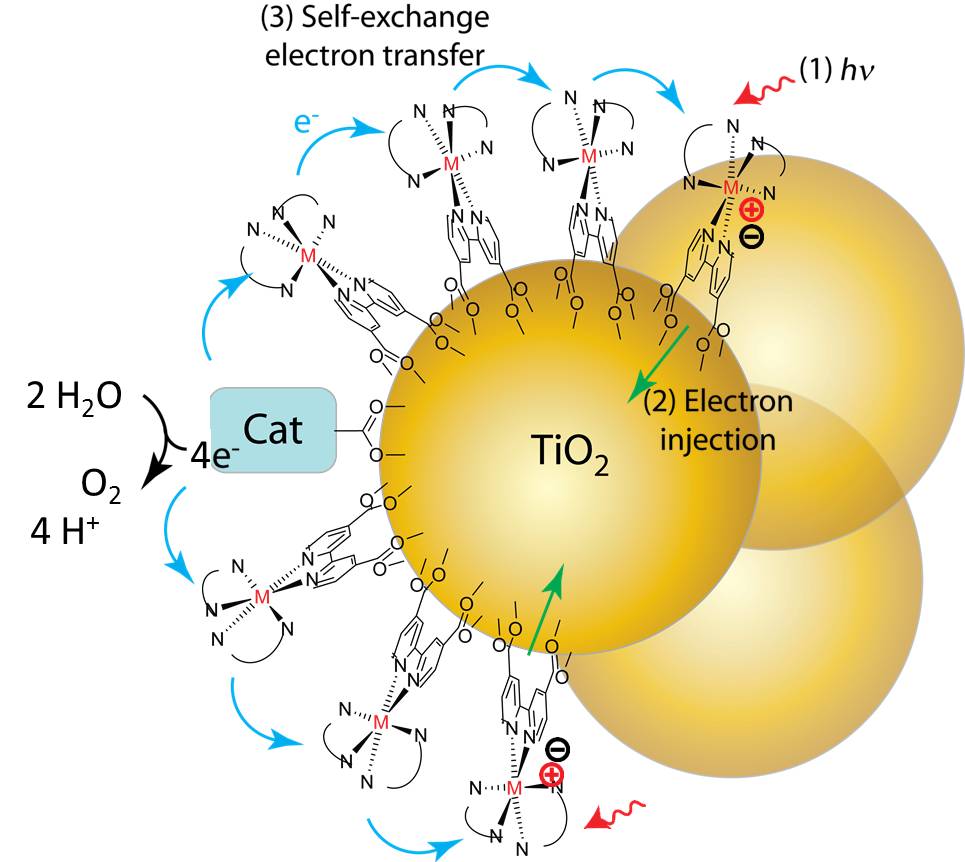 |
If several photon absorption events could be efficiently coupled to multiple-charge-transfer catalysis in donor–chromophore–acceptor complexes, light-driven reactions to form stable chemical products would be possible. Although individual electron-transfer and energy-transfer events are efficient, successful integration into a functioning system remains elusive. The Ardo Group is evaluating various integrated geometries to demonstrate sunlight-driven charge accumulation, which is projected to enable a >20% efficiency for solar energy conversion to electricity. |
This work was previously supported by funding from the U.S. National Science Foundation and a U.S. National Science Foundation graduate-student research fellowship. | |
Next-Generation Thin-Film Solar Cells (Project No Longer Active)
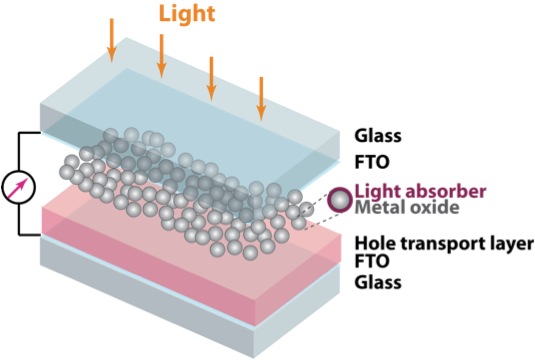 |
Hybrid organic–inorganic lead–halide perovskite solar cells have reached >20% sunlight-to-electrical energy conversion efficiency using small laboratory-scale devices. However, for commercialization, the materials need to be made more robust and lead should be replaced with more environmentally friendly alternatives. The Ardo Group is chemically modifying the organic moiety from a monovalent cation to a divalent cation with the goal of increasing thermal and moisture stability of one-dimensional and two-dimensional metal–halide perovskite materials. |
This work was previously supported by funding from UC MEXUS–CONACYT, the Alfred P. Sloan Foundation, a U.S. National Science Foundation graduate-student research fellowship, and a U.S. Department of Energy graduate-student research award.   | |